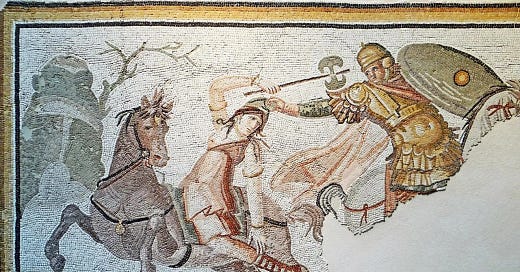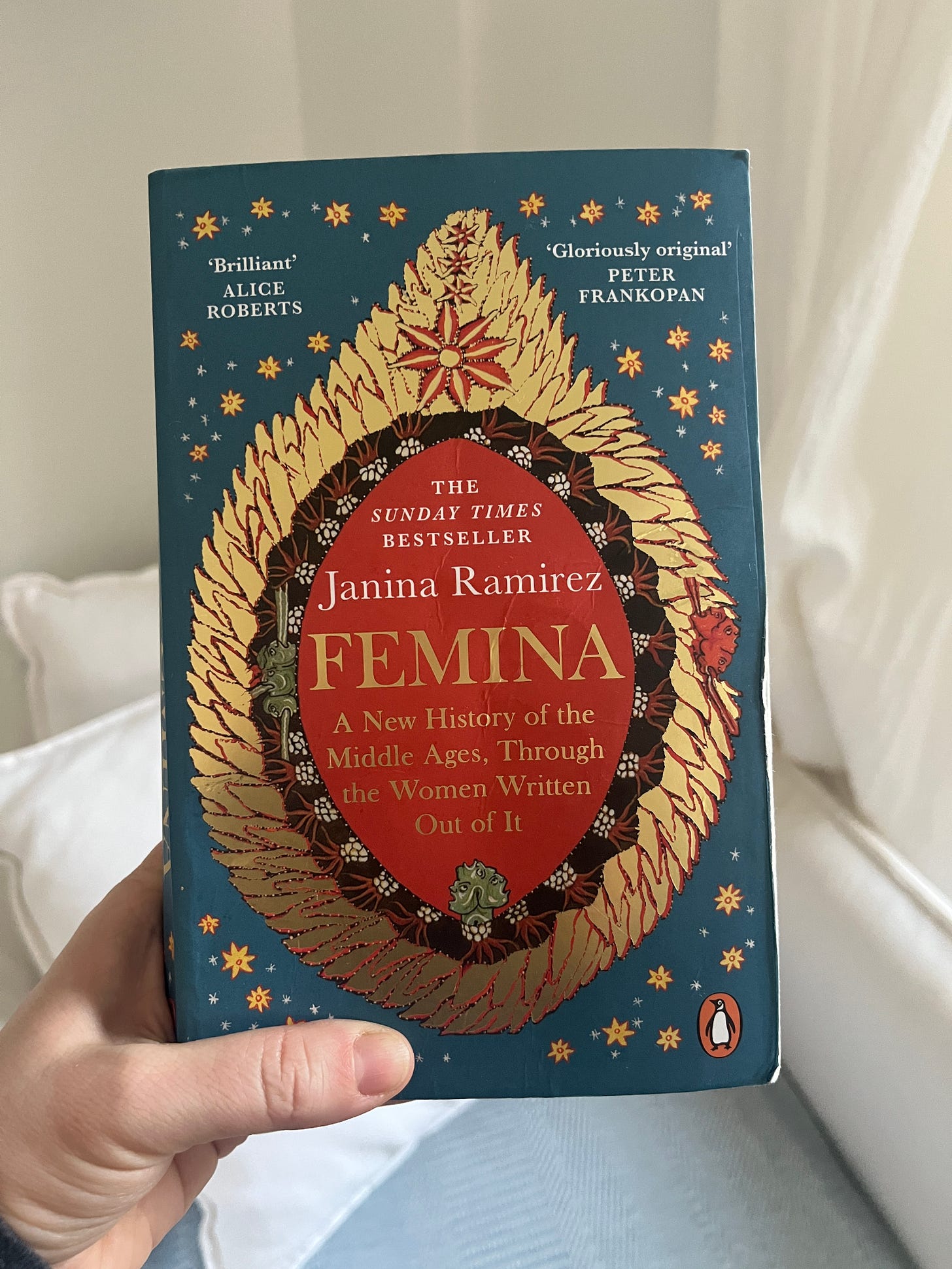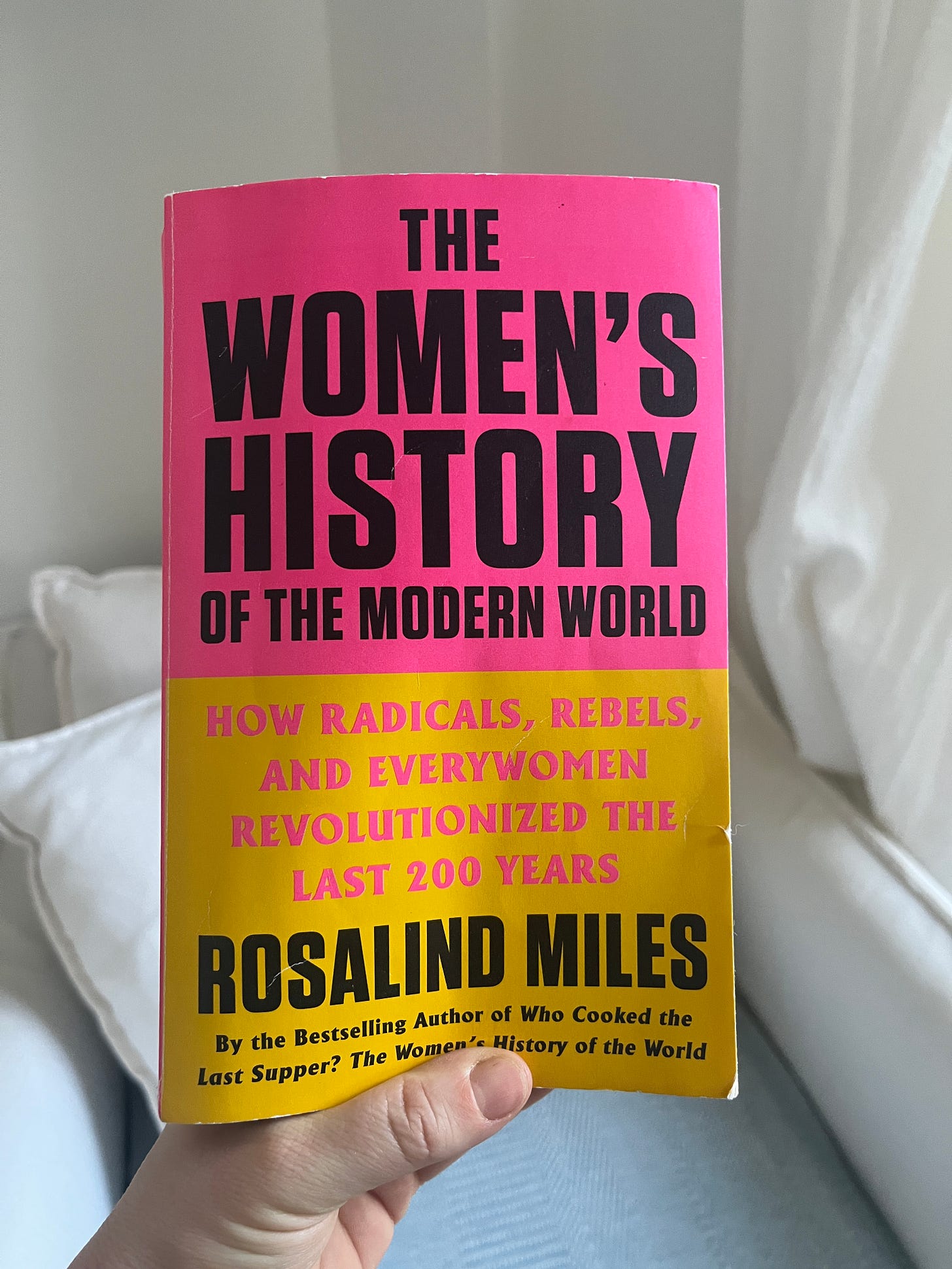Women have always been warriors
Why it matters that we know about female fighters, hunters and weight lifters from the past

“Shall we summon our wives and mothers to the battle-field?"
Women have led armies in all ages, have held positions in the army and navy for years in disguise. Some fought, bled, and died on the battle-field in our late war.
—The History of Women’s Suffrage
Apropos of the news lately, I am thinking about female warriors and hunters. I grew up learning—or just absorbing— that prehistoric men were fighters and hunters and prehistoric women were peaceful gatherers and therefore…men and women are different today, and suited to different roles. But this is actually not true, starting with the foundational idea. Interestingly, stories of female hunters and warriors have been showing up in the in books I am reading, in newsletters my mom forwards to me, and in headlines. I have to wonder: why now?
Not too long ago, there was a spate of articles about a new study that upends the idea that men were hunters and women were gatherers. In looking at old data and with fresh (less misogynist eyes), scientists and anthropologists found that there was ample evidence that women hunted, too. It’s there in the bones, in the tools they are buried with, and accounts of these societies. The evidence hasn’t changed, there is just an openness to considering it with a different perspective. Now that people with less rigid ideas of gender roles are allowed to reconsider old evidence, we get new insights.
It should not be breaking news that women are hunters, given that in many, many species of animal the females hunt in order to feed themselves and their young. They hunt using force, speed, tools and strategy. We all watch this on an endless supply of Netflix nature documentaries. Long, long ago, people worshipped Diana, the goddess of the hunt.
Of course women were hunters.
I can’t believe we ever thought otherwise.
Women were warriors, too.
I just finished reading the brilliant book Femina: A New History of the Middle Ages Through the Women Written Out of It. The author, Janina Ramirez, describes the case of a Viking Warrior who was long presumed to be male until DNA testing of tooth shards revealed the truth:
But for over a century, this individual has been known as the ‘Birka Warrior’. Found with an axe, quiver of arrows, spears and a sword, the skeleton was surrounded by ‘masculine’ objects, so archaeologists assumed the bones had to be male too. Now the XX chromosomes overturned these assumptions. The warrior was a woman.
Presumed to be male until…this is a theme repeated over and over in this book and so much of our history. When it comes to women in the Middle Ages, we might think only of witches. But evidence shows that there were lady warriors, Queens, artisans and leaders in addition to Joan of Arc. Women in the Middles Ages made art, owned property, forged alliances, and put the hops in beer, among other accomplishments. In the midst of writing this piece, one of my favorite newsletters appeared in my inbox with the subject No one Should Be Surprised That Celtic Britain Was Women-Centric. She writes:
Many other ancient Roman writers, including the politician Julius Caesar, were similarly fascinated — or terrified — by the women they encountered among the Celts. They were said to be able to take multiple husbands, divorce, inherit property, hold positions of power and fight in battles.
This was not the story I absorbed growing up. In that story, patriarchy had already won and had been established. This shows otherwise.
Women in our recent history were soldiers and fighters.
In The Complete History of woman Suffrage (a favorite of mine, as many of you know) there are whole pages and chapters devoted to women who fought in the revolutionary and civil wars disguised as men. Women were fighters. They tell of one Mary Smith, “a large-sized, hearty-looking girl” from Ohio who “burned all her feminine garments and papers,” assumed men’s dress and fought in the war. “She passed through all the campaigns in which the regiment was engaged without a scratch.” She is just one of many whose existence this book—by women, about women—has preserved.
In their fight for the vote, the Suffs had to deal with the argument that “bullets and the ballot” went together. Therefore, because women were the weaker sex who could not fight in battles, they could not have the ballot. The Suffs were not buying it. Please enjoy this exchange:
Mr. Greeley said: "Ladies, you will please remember that the bullet and ballot go together. If you vote, are you ready to fight?"
"Certainly," was the prompt reply. "We are ready to fight, sir, just as you fought in the late war, by sending our substitutes."
Lastly, I am in the middle of the book The Women’s History of the Modern World: How Radicals, Rebels and Everywomen Revolutionized the Last 200 Years by Rosalind Miles. There is a lot happening in this book, but I was struck by a brief section on “the queen of women weight lifters,” Bavarian Katie Brumbach who
“…could balance her 165-pound husband and their baby on one arm. She sealed her reputation by raising 300 pounds above her head to defeat the world-famous Prussian strongman Eugene Sandow in a weight-lifting contest. To ensure that no one ever forgot her outstanding victory over the man now recognized as the father of powerlifting, Brumback changed her stage name to a feminine form of Sandow and billed herself as “Sandwina” for the rest of her career.”
She is just one strong woman of many, of course. I appreciate her sense of humor too. Just knowing about her—and other women like her—forces a shift in the narrative that we have been told and sold. It sparks a perception shift. Maybe women are not weak or delicate, after all. The evidence does not support the claim. What does it mean if they are not? Who is served by the legacy we have been served?
What does it matter if women were rules, warriors, or hunters or weight lifters?
I am thinking about all this because the national discourse is actually considering women in the military and the right of Trans folks to exist—battles I (optimistically) thought had been won. I am not going to debate these things, but I’m going to ask: why are they attacking these points right now?
Because patriarchy rests on the idea that there is a stronger sex and a weaker one (Yet the “weaker” sex were the ones birthing babies and performing the herculean feat of doing laundry before running water). It rests on the claim that there is a protector and one who needs protection (never mind that biggest danger to woman is the man in her house). It rests on the idea that man is bigger than woman (never mind that some of my female friends are taller than some of my male friends).
Patriarchy needs us to believe that men are strong and women are weak. That is why we cannot have lady warriors, weigh lifters and stay at home dads. It needs us to believe that men are hunters and women are shopaholics/gatherers. It needs us to believe in simple binaries. They are trying to destroy evidence to the contrary.
I think we have made great strides in busting down a lot of patriarchy, which is why we’re seeing a renewed effort to strengthen the foundation of it. Let’s not fall for it. Let’s remember that we are strong, brave and more powerful than we realize.





We are SO much more than patriarchy demotes us to. Another of Rosalind Miles' brilliant books is "Who Cooked the Last Supper?" As I read it, I laughed and laughed, and cried and cried. Women have understood local action long before men ever noticed it. We make change from right where are--the place where we do have power. Maya, brava again! Thanks for the reminder.
I would like to find a young warrior, who we help galvanize women to protest and lead us in the direction of strength and collective strength and redefine world collaboration that contributes to strength and stewardship for all